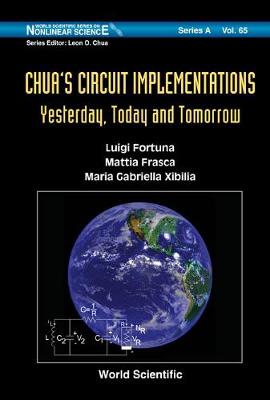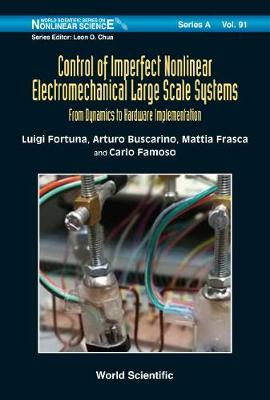World Scientific Series on Nonlinear Science Series A
5 primary works
Book 48
Bio-Inspired Emergent Control of Locomotion Systems
by Mattia Frasca, Paolo Arena, and Luigi Fortuna
Published 1 January 2004
This book deals with locomotion control of biologically inspired robots realized through an analog circuital paradigm as cellular nonlinear networks. It presents a general methodology for the control of bio-inspired robots and several case studies, as well as describes a new approach to motion control and the related circuit architecture.Bio-inspired Emergent Control of Locomotion Systems provides researchers with a guide to the fundamentals of the topics. Moreover, neuro-biologists and physiologists can use the book as a starting point to design artificial structures for testing their biological hypotheses on the animal model.
Book 63
This book focuses on the research topics investigated during the three-year research project funded by the Italian Ministero dell'Istruzione, dell'Università e della Ricerca (MIUR: Ministry of Education, University and Research) under the FIRB project RBNE01CW3M. With the aim of introducing newer perspectives of the research on complexity, the final results of the project are presented after a general introduction to the subject. The book is intended to provide researchers, PhD students, and people involved in research projects in companies with the basic fundamentals of complex systems and the advanced project results recently obtained.
Book 65
Chua's Circuit Implementations: Yesterday, Today And Tomorrow
by Luigi Fortuna, Mattia Frasca, and Maria Gabriella Xibilia
Published 16 April 2009
Since the birth of the Chua circuit in 1983, a considerable number of fruitful, fascinating and relevant research topics have arisen. In honor of the 25th anniversary of the invention of Chua's circuit, this book presents the 25 years of research on the implementation of Chua's circuit, and also discusses future directions and emerging applications of recent results.The purpose of the book is to provide researchers, PhD students, and undergraduate students a research monograph containing both fundamentals on the topics and advanced results that have been recently obtained. With about 60 illustrations included in the book, it also shows the detailed schematics of several different implementations that can be easily reproduced with a low-cost experimental setup and PC-based measurement instrumentation.
Book 72
Fractional Order Systems: Modeling and Control Applications
by Riccardo Caponetto
Published 1 January 2010
This book aims to propose the implementation and application of Fractional Order Systems (FOS). It is well known that FOS can be utilized in control applications and systems modeling, and their effectiveness has been proven in many theoretical works and simulation routines. A further and mandatory step for FOS real world utilization is their hardware implementation and applications on real systems modeling. With this viewpoint, introductory chapters are included on the definition of stability region of Fractional Order PID Controller and Chaotic FOS, followed by the practical implementation based on Microcontroller, Field Programmable Gate Array, Field Programmable Analog Array and Switched Capacitor. Another section is dedicated to FO modeling of Ionic Polymeric Metal Composite (IPMC). This new material will have applications in robotics, aerospace and biomedicine.
Book 91
This book focuses on a class of uncertain systems that are called imperfect, and shows how much systems can regularly work if an appropriate control strategy is adopted. Along with some practical well studied examples, a formalization of the models for imperfect system is considered and a control strategy is proposed. Experimental case studies on electromechanical systems are also included.New concepts, experimental innovative circuits and laboratory details allow the reader to implement at low cost the outlined strategy. Emergent topics in nonlinear device realization are emphasized with the aim to allow researchers and students to perform experiments with large scale electromechanical systems. Moreover, the possibility of using imperfections and noise to generate nonlinear strange behavior is discussed.



